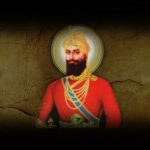Srinivasa Ramanujan, born on December 22, 1887, was an Indian mathematician. He was born during the British colonial period in India. He became one of the greatest mathematicians of all time despite having no formal training in pure mathematics! Ramanujan made several key contributions to the infinite series, continued fractions, mathematical analysis, and number theory. He also came up with solutions to mathematical problems that were considered unsolvable. Now that you know a bit about the genius, let’s learn more about him!
Fast Facts
Full Name:
Srinivasa Ramanujan Iyengar
Nickname:
Ramanujan
Birth date:
December 22, 1887
Death date:
April 26, 1920 (age 32)
Zodiac Sign:
Capricorn
Height:
5' 8"
Net Worth:
$1.5 million
Background
Srinivasa Ramanujan Iyengar was born in Erode, Mysore Kingdom. The region is now the state of Tamil Nadu in India. His mother’s name was Komalatammal and she was a stay-at-home mom. His father, Kuppuswamy Srinivasa Iyengar, served as a clerk at a garment shop. The family lived in a modest traditional home in the town of Kumbakonam. He also had a brother who tragically passed away at the age of three months. His mother also gave birth to two more children between 1891 and 1894; however, both of them passed away shortly after their birth.
In 1892, Ramanujan began attending a local school. Thereafter, he was enrolled in Kangayan Primary School. Very close to his mother, he learned about religion and tradition from her. Young Ramanujan was brilliant in academics and when he was just 10 years old, he passed his examination with the best scores in his district in the subjects of geography, Tamil, English, and arithmetic. Clearly a child prodigy, he became a master of mathematical knowledge at the mere age of 11 and received awards and merit certificates throughout his high school years.
Interestingly, his excellence in math backfired when he was in college as he performed poorly in other subjects. As a result, he dropped out of college but continued to work on a collection of mathematical theorems, concepts, and ideologies. A breakthrough in his career took place when he got acquainted with V. Ramaswamy Iyer, who was the founder of the Indian Mathematical Society. Aiming for a job at the institution, Ramanujan showed Iyer his math notebook, who was struck by the mathematician’s extraordinary skills. Ramanujan then began sharing his works with international mathematicians, such as M.G.M Hill, J.E. Littlewood, and G.H. Hardy, who examined his work and arrived at the conclusion that Ramanujan was a true genius.
Career timeline
Ramanujan publishes a 17-page booklet on Bernoulli numbers.
Ramanujan publishes numerous research papers in collaboration with Hardy.
Cambridge University awards him a degree in Bachelor of Science “by research.”
Ramanujan becomes the first Indian to become a Fellow of the Royal Society.
Why We Love Srinivasa Ramanujan
His perseverance
Ramanujan is a prime example of how being a genius does not guarantee an easy path to success. His first two letters of introduction to Cambridge went unanswered. Over his lifetime, he failed several times, especially in non-mathematical subjects. He even lost a scholarship in college because he failed in some subjects but he didn’t give up.
His humble beginnings
He experienced financial instability in his life, particularly during his early childhood and teenage years. In fact, Ramachandra Rao, the Indian Mathematical Society’s secretary, began helping him financially from the year 1990. His humble beginnings made him even more determined to succeed.
A true genius
A child prodigy, Ramanujan was only 13 when he worked out Loney’s Trigonometry exercises completely on his own! He also came up with 17 ways of representing 1/pi as an infinite series. Needless to say, he was a true genius.
5 Surprising Facts
A book started it all
A book named “A Synopsis of Elementary Results in Pure and Applied Mathematics” by George Shoobridge Carr sparked his interest in math.
He was a vegetarian
The mathematician followed a strict vegetarian diet.
A day in his memory
In India, his birthday, December 22, is commemorated as National Mathematics Day.
His humble origins
The mathematician used slates as paper was expensive.
He had a lonely childhood
He did not have any friends in school as no one understood him.
Srinivasa Ramanujan FAQs
Why is 1729 called the Ramanujan number?
1729 is called the Hardy-Ramanujan number as it is the smallest number that can be expressed as the sum of two distinct cubes in two different manners.
What is Srinivasa Ramanujan famous for?
He is popular for his contribution to numerous areas of math, most notably, the infinite series and number theory.
At what age did Srinivasa Ramanujan die?
He passed away at the age of 32.
Srinivasa Ramanujan’s birthday dates
| Year | Date | Day |
|---|---|---|
| 2024 | December 22 | Sunday |
| 2025 | December 22 | Monday |
| 2026 | December 22 | Tuesday |
| 2027 | December 22 | Wednesday |
| 2028 | December 22 | Friday |























